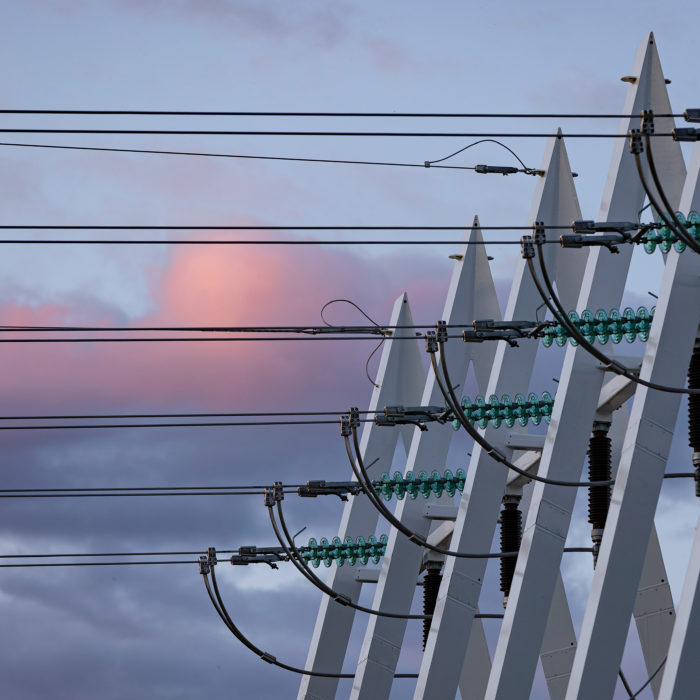The importance of saving electricity became a hot topic in Finland towards the end of last summer. Media outlets were filled with threatening images of an energy crisis and electricity shortages.
Russia’s invasion of Ukraine and the consequent sanctions had caused uncertainty around the energy situation in Finland and Europe as a whole since the spring. In the summer, the challenges mounted when the commissioning of Olkiluoto 3 did not go as expected.
Operators in the sector, including Fingrid, the Ministry of Economic Affairs and Employment and distribution system operators, began thinking about how to ensure the availability of electricity over the winter and prepare people for the possibility of rolling power cuts.
At the same time, operating models were reviewed in case there was not enough electricity.
“Fingrid has long had strong operating models in case of electricity shortages. However, last year’s events required a better capacity to communicate and provide stakeholders with situational awareness if there is a risk of electricity shortages,” says Tuomas Rauhala, Senior Vice President at Fingrid.
There were no electricity shortages last year, nor was it necessary to use the three-step scale for addressing an impending electricity shortage. In other words, Finnish electricity production and electricity imports covered consumption.
At the most critical moments, it was very important that Finland’s domestic production facilities operated at full power, help was received from other countries in the Baltic Sea region, and electricity users reined in their consumption.
Finnish consumers saved as much as 1,500 megawatt-hours of electricity in individual hours.
“During challenging periods, Finnish consumers saved as much as 1,500 megawatt-hours of electricity in individual hours, which is a really substantial saving. This helped Finland overcome momentary difficulties in the adequacy of electricity. We also received important help from other countries, and the transmission links worked properly,” Rauhala says.
In October, Motiva’s Down a Degree campaign inspired citizens to talk about how they save electricity and their goals in doing so. The campaign was a joint effort by six organisations to provide electricity consumers with important information before the coldest part of the winter.
In fact, the organisations began cooperating closely as soon as Russia invaded Ukraine. Working together was considered important to avoid releasing conflicting information in such a serious situation.
“The organisations shared information openly, so everyone acted and spoke about the same things in the same tone of voice,” says Enni Saikkonen, Communications Specialist at the Ministry of Economic Affairs and Employment.
In the event of an electricity shortage, the Ministry of Economic Affairs and Employment is responsible for providing the latest information to the populace and all societal actors.
The media is an important route for disseminating information, and numerous briefings were arranged last year to keep the media informed.
“Media operators have a genuine understanding of this issue and have publicised electricity matters in their own channels and answered people’s questions at the grassroots level. It was great to see how the newspapers, television, radio and social media spoke and wrote about electrical issues,” Saikkonen says.
The media received better service thanks to close cooperation between the organisations. Whenever necessary, the ministry passed on interview requests to entities such as Fingrid, the National Emergency Supply Agency and the Energy Authority and vice-versa, as the organisations became more familiar with each other’s operations over the last year.
Preparing for rolling power outages
Citizens were encouraged to save electricity and prepare for power cuts. If there is a risk of an electricity shortage, distribution system operators should notify households and businesses of the need for rolling power cuts by text message, for example.
Distribution system operators play a key role in the event of an electricity shortage because they would implement rolling power outages in accordance with Fingrid’s instructions.
According to Henri Heikkinen, Operations Services Manager at Enerva Oy, which provides distribution system operators with operations services, automation can now be used more effectively to implement power outages and allocate them to various parts of the network.
“We have worked with the distribution system operators to identify the most critical electricity users who must receive electricity under all circumstances. We have also considered how to implement rolling power cuts in a way that minimises the harm to the functioning of society,” Heikkinen says.
In addition to saving electricity, the most important lesson for many people is the importance of preparation.
In addition to saving electricity, the most important lesson for many people is the importance of preparation – understanding the everyday activities or aspects of business operations that could be affected in the event of an electricity supply disturbance.
“Preparing for electricity shortages is nothing new, but the topic has been at the forefront for the last year, and everyone has taken note. Electricity consumers also have a better understanding of the need to be prepared for potential power outages,” Heikkinen says.
After the summer, a new winter
No electricity shortages occurred last winter, thanks to the expertise of electricity sector operators, effective and consistent communications, and electricity savings by citizens.
Careful preparations have now been made for potential electricity shortages, and last year’s work will not go to waste. We should keep these lessons in mind when the next cold snaps approach.
“Electricity shortages could also occur in the summer if the electricity network suffers several severe disturbances at the same time,” Heikkinen points out.




